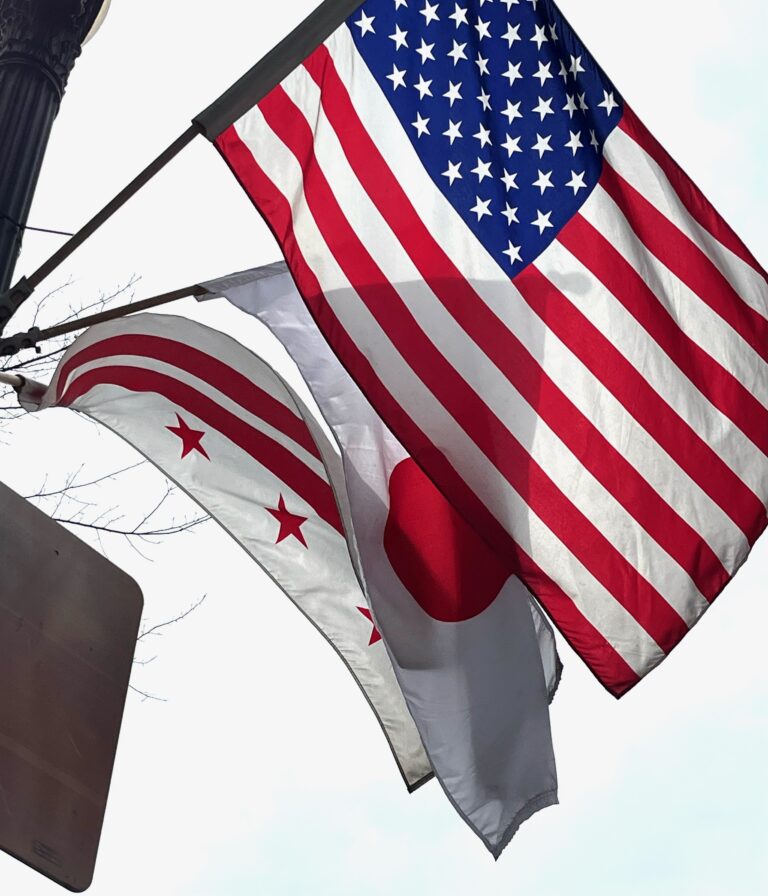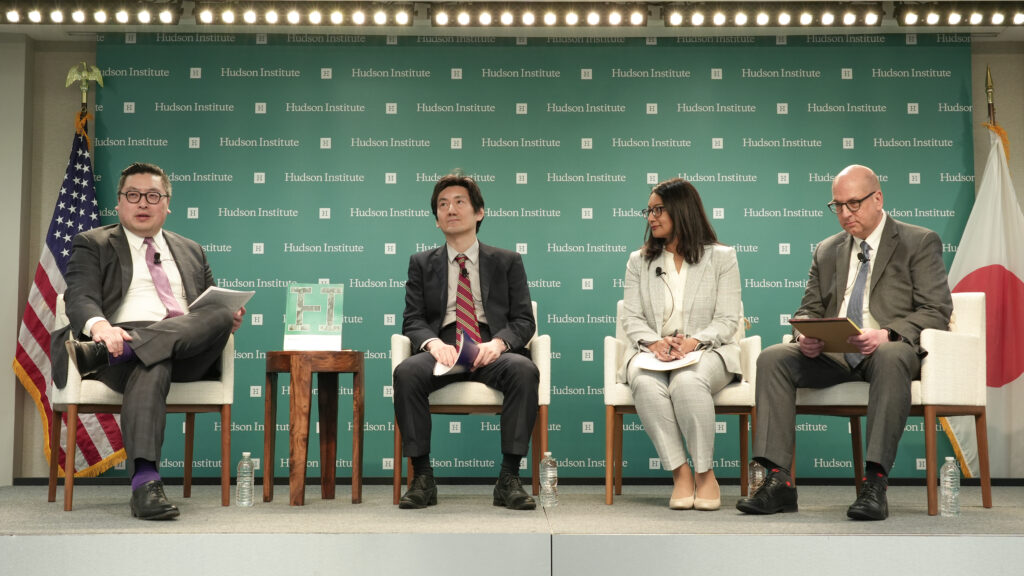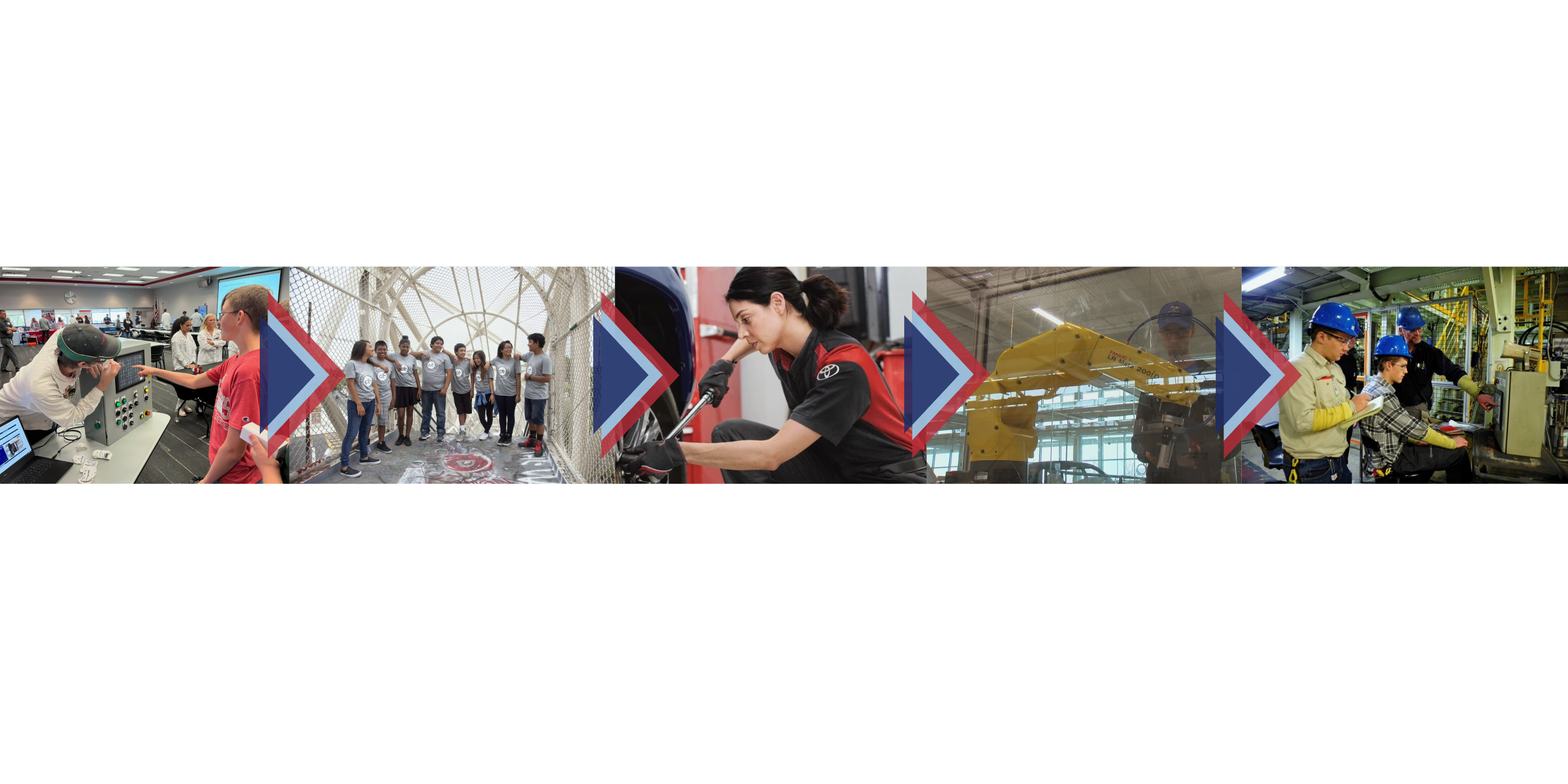By Anita Rajan, General Director
Just a short walk from the Japan Automobile Manufacturers Association (JAMA) USA’s office, U.S. and Japan flags are prominently displayed around the White House to commemorate this week’s Official Visit of Prime Minister Fumio Kishida. This celebratory occasion highlights the positive and important relationship between the U.S. and Japan. The economic ties underlying this relationship have provided mutual benefits to both countries over several decades and Japanese-brand automakers have, and continue to be, a key part of this ongoing partnership through “good-quality” foreign direct investment (FDI).

In fact, based on 2023 data, these automakers’ cumulative manufacturing investment reached an all-time high of $61.6 billion and total direct employment rose to over 109,000. Japanese-brand automakers’ successes in the U.S. have not only benefited those they directly employ, but also beyond, including dealer, supplier, service, and all other supporting jobs, which in total encompasses over 2.2 million jobs. These investments and the substantive jobs and careers they provide contribute significantly to U.S. economic competitiveness. As the Japanese Ambassador to the U.S., Shigeo Yamada, noted in a recent discussion at the Center for Strategic and International Studies previewing the visit, “The [U.S.-Japan] partnership is indispensable in strengthening each other’s competitiveness.”
Ahead of the Official Visit, I also had the honor and pleasure of participating in the Hudson Institute Japan Chair’s Conference on US-Japan Economic Relations, where I highlighted the important role that JAMA members have played in strengthening bilateral ties and economic competitiveness. Notably, Indiana Governor Eric Holcomb kicked off the conference with an insightful keynote address remarking how the investments initially from Subaru, followed by Toyota and Honda, helped drive Japanese FDI in the state to where Japan is now viewed as a vital partner. Later in the event, on a panel focusing on the benefits of Japanese FDI to the U.S., I noted that Japanese-brand automakers’ U.S. investments are a prime example of how FDI coupled with a deep commitment to the U.S. market, its workforce and its communities can result in decades of success. In our case this is a story that is over 40 years in the making and one that is still being written today. This is a story of good quality FDI that is people-centric, long-term, and focused on meaningful partnerships with communities as exemplified by Governor Holcomb’s remarks.

Ultimately, it is this good quality FDI that has enabled JAMA members to play such a meaningful role in the bilateral relationship. Through good quality FDI, JAMA member companies have been able to develop roots in the U.S. which have grown and strengthened to where these companies’ operations and automobiles have become a seamless part of the American landscape. This type of FDI comes in many forms. Just last week, as part of Toyota USA Foundation’s Driving Possibilities initiative, $2 million in grants were announced for programs to help prepare students in counties in and around where in 2025 Toyota will open its first battery manufacturing plant in North Carolina for science, technology, engineering and math (STEM) careers of the future. While Honda is steadily moving towards the completion of a battery manufacturing facility in Ohio through its joint venture with LG Energy Solutions, it also continues to inspire and educate future generations through their sponsorship of the “Meet the Innovators” exhibit at the Center of Science and Industry (COSI) in Columbus, Ohio. Regarding long-term commitments, last month Nissan reached the 15 millionth vehicle milestone at its Smyrna, Tennessee plant, which was the first automotive assembly plant to open in the state. Nissan’s 18-year plus partnership with Habitat for Humanity is another important example of steady partnership that has touched many lives in local communities near its major U.S. manufacturing and operational locations.
Good quality FDI also comes in the form of caring for the environment and providing support to those in need. Subaru established itself as an industry leader in sustainability when it became the country’s first zero landfill automaker in 2004. Commitment to the environment extends beyond their facilities to U.S. national treasures, namely, its ten-plus year partnership with, and now as the largest corporate donor to, the National Park Foundation, which provides education, outreach, and public awareness programs, to help preserve historic sites and protect natural habitats. The Mazda Foundation looks to address food scarcity in southern California through its 19th consecutive year of support for the Second Harvest Food Bank, which is a great example of what it is to lend a helping hand. Mitsubishi Motors’ Community Utility Vehicle (CUV) program also offers vehicle loans to nonprofit organizations to help provide transportation and delivery services for critical items like essential supplies and vaccines to enhance much needed support to local communities.
These diverse and innumerable examples of how Japanese-brand manufacturers provide a kaleidoscopic array of contributions to the U.S. economy, society, and automotive industry and this is what good quality FDI is all about. It is not only about creating opportunities, but also genuinely caring and positively contributing to the communities where all involved can succeed in the long-term.
What is clear is that JAMA member companies’ long and deep engagement in the U.S. market, workforce, and communities strengthen the foundation of U.S. and Japan’s economic partnership and by doing so also allows the overall relationship between these two great nations to endure and flourish.

